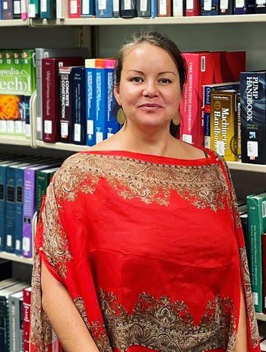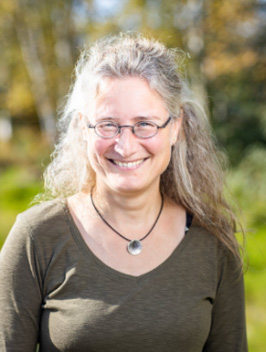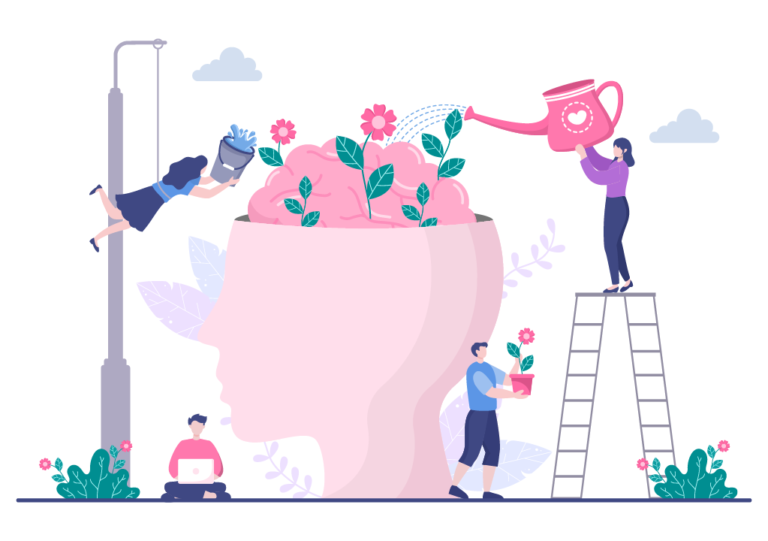
Faculty Perspectives: Open Educational Resources
Open Education Resources (OER) are freely accessible teaching and learning materials that are openly licensed, allowing faculty to legally and freely share, use, and modify educational content for their courses. At UAF, courses tagged as No or Low Cost (NoLo) in the schedule do not require textbooks or materials in excess of $40. Learn more about NoLo here.
Teaching practices that integrate OER have the potential to increase student engagement and inclusivity by allowing instructors to customize resources in order to meet the diverse needs of their student cohort. In turn, this can lead to greater academic success. However, textbook and materials costs are a substantial barrier for many students which can contribute to equity disparity [1].
Takeaways
The use of OER can:
- Facilitate personalized learning and inclusivity.
- Promote discussions around biases in content and encourage critical thinking skills.
- Encourage innovative teaching methods that help engage students.
How do UAF faculty use OER to support equitable education experiences for students?
We asked several expert faculty members from the UAF Faculty Senate OER Committee who generously shared their knowledge, perspectives, and experiences by participating in an informal asynchronous discussion during the month of January 2024 around OER and NoLo courses.
[1] Jenkins, J. J., Sánchez, L. A., Schraedley, M., Hannans, J., Navick, N., & Young, J. (2020). Textbook broke: textbook affordability as a social justice issue. Journal of Interactive Media in Education, 2020(1), 3. https://doi.org/10.5334/jime.549
Guest Faculty

Latrice Bowman
Associate Professor of Mathematics, UAF Department of Mathematics and Statistics

Genova Brooks Boyd
Assistant Professor of Library Science, Elmer E. Rasmuson Library

Scott Goddard
Assistant Professor of Statistics, UAF Department of Mathematics and Statistics

Anja Kade
Associate Professor, UAF Department of Biology and Wildlife
Click on the topics below to read faculty responses. If you would like to contribute to this discussion, please comment at the bottom of this page or contact the FS OER Committee Chair, Anja Kade ankade@alaska.edu, to join the Committee for further discussion.
Latrice: I feel like my in-person classes are much more interactive, and my asynchronous classes are more robust. Having a plethora of OER materials means that students can choose which resources are more beneficial to their learning style.
Genova: In a large way, examining and using OERs has increased discussion about information creation and dissemination. Students become aware of how information is spread, the inherent biases that information can hold, and the process of creating authority in texts. In a big way, classes have focused on information privilege and who is able to have access to information and how this impacts the wider body of research in academic and non-academic settings. OERs tend to demonstrate this very well.
Scott: My trial of an OER textbook coincided with my adopting a novel grading and assessment framework. I’m pretty sure it would have been possible to try the new framework with the old textbook, but something about casting off the restraints of traditional materials caused me to feel free to experiment with other course elements. The students, on balance, liked the new framework as well as the OER textbook.
Anja: OERs remove barriers to student achievement by providing students with equitable access to tools, opportunities and resources they need to succeed. OERs also support inclusive pedagogical practices because they can be modified and adapted to meet the diverse needs of students, such as learners with disabilities or those from marginalized communities. At UAF, 70% of students have chosen not to purchase a required textbook at some point during their education due to cost, which could have potentially had adverse effects on their academic performance. Therefore, we should consider including appropriate OERs or low-cost material options when feasible to help lower barriers to college affordability and increase student retention.
Genova: Privilege is a real and inherent factor in the creation and access of information, particularly in academic settings. Not every student/faculty/researcher has equal access to the same sources and the information literacy skills to decode them. Not every student can afford access to information. OERs reduce barriers to information access, providing communities with a more equal footing and fewer restrictions to information retrieval.
Genova: I have found that covering key concepts in classes and then pointing students to OER resources they can take away with them and access for greater understanding/use at any time has been hugely helpful. I have used existing OER to help develop my course structure and the timing of the presentation of key concepts in class. OER content has been modified and included in my class, giving students access to different voices of instruction and, at times, access to more informed instructors on key issues. An example is the use of an OER on using indigenous sources in academic research. Through OER, I can point to resources on this topic that have been created by indigenous instructors/experts.
Latrice: I like having some control over the content. OERs make it easy to modify how the material is presented and allow me to easily embed activities that may help students make connections between concepts. OERs help align specific content/assignments to the specific learning outcomes for the course.
Genova: My course outcomes call for students to understand how information is created and disseminated, what we do with it and how it can be used for varying purposes. With OER / OA sources, I can demonstrate to students how information can be presented/created and disseminated in different ways without worrying about the cost for myself and for students in accessing the sources.
Scott: The OER textbook I used last spring was, in almost every way, as good or better than any of the expensive textbooks I’ve used for the course. I feel like the expensive texts contain a good deal of filler and padding in the form of photos, tangential insets, and other colorful content whose only purpose is to promote student engagement. I have to wonder how much the book’s price owes to this barely educational content. The OER book I used was much more focused and streamlined, while the exposition itself was every bit as good.
Genova: Student engagement in class is not reliant on student access to a particular textbook. Instead, students have access to a plethora of OA sources and OER that give different perspectives and open discussion in class. I can ask students to find OA materials and share these easily in discussion groups without coming into issues with copyright.
Scott: Continuing my previous comments, I don’t believe that the student-engagement features of the expensive books actually help students engage with the book. Most students will ignore their book no matter how many pretty diagrams it contains. Those who pick it up are students who need or want to understand the course material, and they don’t benefit from the fluff. They benefit from clear, tight descriptions and carefully worked examples. If anything, then the OER book is actually easier to engage with by virtue of not diluting the core elements with tons of superfluous meanderings.
Genova: I had students create education posters, graphics and wall art which explained basic concepts covered in my class. These were then (with the student’s permission) passed on to incoming students in the next class so that these students could use them as quick reference guides when studying for finals. This served the purpose of having students demonstrate their understanding of course concepts and sharing the sources with others. They became part of the information creation process. New students were asked to do the same process to pass on to incoming students in a cyclical manner.
Scott: In grad school, I took a required class that was taught from a traditional textbook. It was a monograph on a narrow topic, even though the course was supposed to cover a broad range of things. The next time the course was taught, a different professor was teaching. I don’t know if there was a textbook, but he had the students create a wiki as they went so that they might collaboratively enshrine their learning in a common place for future reference. As I watched my peers proceed through the course, I couldn’t help being envious of their exposure to concepts I hadn’t seen and of their joint labor on their beloved wiki.
Anja: I use low-cost lab materials and a free OER biology OpenStax textbook in my nonmajor biology course BIOL F103X. Students let me know on a regular basis how much they appreciate not having to purchase expensive textbooks or lab materials. This inspired me to search for additional OER materials to include in my other courses. Several students in my non-major biology course have communicated how much they appreciate having this low-cost course option.
Here are a couple of student quotes:
“I really appreciated a class that helped their students by having an online book and lowered the cost of what was needed for the labs.”
“Thank you for making this class more affordable – I appreciate that you look out for students who don’t have much money!”
Latrice: I usually have a final exam review for students, and one year my students talked about how they wished the reviews could be more interesting and actually help them figure out what they needed more work on. So I created an escape room that reviewed various concepts they would see on their final. I honestly didn’t think it was very different than handing them a sheet with a bunch of problems but the students really liked it and said that just changing the format of it made them have to think about how to approach the problems (it wasn’t just, here is the content from Chapter 2…). I also found that, on average, more students attempted and completed the escape room than students in previous semesters with the basic review. I feel like this is pretty typical with some OER materials. Someone has thought outside of the box to present the material in a different way.
Genova: Feedback seems to indicate a sense of great relief. Students are happy that the high cost of textbooks is mitigated through the use of OER. Additionally, students seem happy to hear that sources are available and open for them after classes, unlike inclusive access models that point students to particular texts, are included as an expense in their tuition, and are often unavailable after course completion.
Scott: The students enthusiastically embraced the notion of a free textbook. They were more ambivalent about the quality and usefulness of the book, once accounting for its price. I believe that in the future, I will use the book slightly differently and be able to resolve some of their lingering concerns with it.
Latrice: For me, the biggest challenge is finding something that is useful, easy to implement, and will keep the students engaged. There are lots of materials out there, and trying to find ones that fit your outcomes, course structure and timeline are often hard to find. I will say that looking at them does give me starting places or ideas on how to make the resources fit my class. Again I think this takes time initially, but for classes that I teach often, it has been worth it.
Genova: Getting students/researchers/faculty to understand that OER, like any other sources, can be peer-reviewed, academic and very thorough, even if they are open and free. However, OER, like any other source, can also be problematic and require critical evaluation, lateral reading and understanding of potential biases.
Scott: The hardest step for me was picking an OER book. There are many places to look for OER materials, and I felt I needed to find a strong contender to our traditional book in order to get buy-in from my colleagues.
Latrice: Teaching 100-level math students are always wanting to know how the material relates to the real world. Many of the things they are learning are foundational, and almost all published textbooks use the same projects or examples that, honestly, are not the most useful/interesting/realistic for students. I have found many OER activities in other disciplines that use some of the basic concepts the students are working with and the activities tend to be more fun for students because they are not just focusing on the math. They get to experiment and make connections to some of the applications they see in other disciplines.
Genova: Primarily to mitigate the cost of education for students. Additionally, OERs should lead the way in creating quality peer-reviewed open-access information sources and aid in creating open university models for the wider community through the use of higher learning institutes.
Scott: I anticipate OER are here to stay, but traditional materials will always maintain a market share. I suppose the two will have to coexist.
Anja: I adopted an OER OpenStax biology textbook in 2019, but the text was geared towards majors and too complex. Luckily, OpenStax published a non-major biology text soon after, so I feel good about the text the students are using now. My course also has an online lab component. I originally put together a physical lab kit through Carolina Biological Supplies that was mailed to the students and ran about $150 plus $50 shipping to AK. This cost proved to be a heavy burden to my students, and we ran into frequent problems with students not purchasing the kit (and consequently failing the course). I searched for alternative DIY activities that students could perform in their kitchens with common household items and achieve similar learning outcomes, and I supplemented these DIY lab activities with additional OER online labs.
Latrice: YES! There are two reasons I have moved to NoLo.
First – I teach a lot of online asynchronous courses that need minor updates each semester (like adjusting due dates). Before, every time a publisher changed editions of books, I would need to do a complete overhaul of the course (and looking in-depth, it was something like they moved a section from earlier to later in the text.) I wanted the material to be more fluid in the sense that if I wanted things to move around or wanted to add material, I didn’t have to make major changes to the course.
Second- Again, most of the courses I teach are 100 and 200-level math. College Algebra, Trig, Precalc, and Calculus have not changed in the 20+ years since I first learned them. When I took Calc I through UAF in high school, the text cost about $55. Some of the current Calculus texts cost around $200 for the same material. Every time a new edition comes out, it costs a little more, but again, the content really doesn’t change. I had students who would find free typed notes online and do just as well as students who were paying the $200. So I asked myself, why make them buy that book?
Genova: Yes, my classes are NoLo. Not only do I believe that it is important for students to feel that there are affordable classes available to them, but I enjoy the freedom to move between sources without a focus on cost to the student. This enables a variety of perspectives to be examined. My classes are a mix of OA sources and OER. I tend to use OER as a template for the delivery of topics covered in my courses and as supplementary sources for students to access and take with them. I use OA sources to present topics to students based on their learning styles and needs. I also work with colleagues in the Library to develop OA instructional materials, which we then make available online to our wider community.
Genova: The more that faculty know what OER are and why OER are important, the more likely they are to create them and use extant OA materials. This then opens opportunities to diverse students who may otherwise not have opportunities to engage in higher education.
Latrice: I think that many faculty are afraid that getting into OERs will take a lot of work or that the resources will not be comparable. I have found just the opposite. I think initially, it can be overwhelming to go through all of the material out there, but I feel like when doing updates or revisions for the next semester, it is easier to transition a unit or module at a time. In the long run, my revisions have become less time-consuming. Also, in terms of the quality, my argument would be that there are really good and some really bad publisher materials. I think that OERs are common enough that there really are a lot of good materials out there. And if you are doing a major revision for a course (or changing a text) it may be worth it to check out some of the OER texts and see that they are not that different than some of the more costly ones.
Scott: Teachers who make generous use of OER in their courses avail themselves and their students to a much broader range of educational experiences than those who keep inside the rigid boundaries of commercially produced materials. I took a course from the music department where nearly every class involved listening to and discussing music from YouTube. There’s no way we could have encountered so much different music if we had limited ourselves to the pieces available on the resources that accompanied the textbook.
Anja: I strongly believe in improving equity in learning and making sure that all students have equal access to courses. Reducing the costs of textbooks and associated course materials helps lower the financial barrier to our courses, which means we can provide more equitable learning opportunities, especially for low-income and first-generation students.
Genova: As a Librarian, it is my calling to advocate for access to information as widely as possible. OER are a fine example of this model.
Additional Reading
- Why should we care about OER?
- Students and learning in the “open”
- Finding and creating Open Education Resources
Learn more about upcoming OER or NoLo-related events or training through the Center for Teaching and Learning, or contact Moss at jlmoss@alaska.edu.




